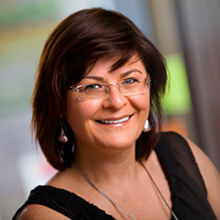Structured Synthetic Phonics
School Curriculum Division, Department of School Education, Ministry of Education and Skills Development
An online course for Primary English teachers
These structured synthetic phonics (SSP) training videos and curriculum materials are provided to the Ministry of Education and Skills Development (MoEDS) by Diana Rigg, founder of PLD Literacy (pld-literacy.org) through Hear Hear for Bhutan (HHfB), a charity organization based in Perth, Western Australia.
These training course is aimed at enhancing the capacity of teachers in implementing structured synthetic phonics in key stage one.
Recommended for - English teachers implementing SSP in the key stage one.
Course presenter - Diana Rigg BA(Ed), BEd, CPP(UK), MEd, MSc(SpPath)
Course length - 4 hours
Access to course - 90 days
Supporting materials - Referenced material available for download
PP SSP Video 1 Alphabet Sounds
PP SSP Video 2 Phonemic Awareness
PP SSP Video 3 The Emergence of Early Reading
Class I SSP Video 4 Phonics and Phonemic Awareness
Class I Video 2 Reading and Spelling Phonics Lists
Class I SSP Video 3 Phonic Passage Reading and Dictation
Class II SSP Video 7 Phonic Concepts
Class II SSP Video 8 Phonic Reading List
Class II SSP Video 9 Phonic Reading Passage
Class III SSP Video 10 Phonic Concepts
Class III SSP Video 11 Phonic Reading Word Lists
Class III SSP Video 12 Phonic Passage Reading

Pre-Primary: Implementation of structured synthetic phonics (SSP)
- Modern Phonics: Alphabet Sounds and Phonic Sounds.
- Phonemic Awareness (the 'sounding out' skills required for reading and spelling).
- The emergence of early reading.
Class I: Implementation of structured synthetic phonics (SSP)
- Part A, focuses upon 'sounding-out' the Class I words, and Part B, focuses upon outlining the Class I phonic sounds.
- Part A, outlines how to teach students to 'sound-out' and read the Class I phonic list words, and Part B, outlines how to teach students to 'sound-out' and spell Class I phonic list words.
- Part A, outlines how to teach students to read the Class I phonic passages, and part B, outlines how to teach students to re-write the class I phonic passages.
Class II: Implementation of structured synthetic phonics (SSP)
- Revision on Pre-Primary and Class I sounds before introducing the Class II phonic sounds.
- Part A, outlines how to teach students to "sound-out" and read the Class II phonic list words and, Part B, outlines how to teach students to "sounds-out" and spell Class II phonic list words.
- Part A, outlines how to teach students to "sound-out" and read the Class II phonic list words and, Part B, outlines how to teach students to "sound-out" and spell Class II phonic list words.
Class III: Implementation of structured synthetic phonics (SSP)
- Revision of Class I and II phonic sounds before introducing the Class III phonic sounds
- Part A, outlines how to teach students to "sound-out" and read the Class III phonic list words and, Part B outlines how to teach students to 'sound-out' and spell Class III phonic list words.
- Part A, outlines how to teach students to read the Class III phonic passages and, Part B, outlines how to teach students to re-write the class III phonic passages.
